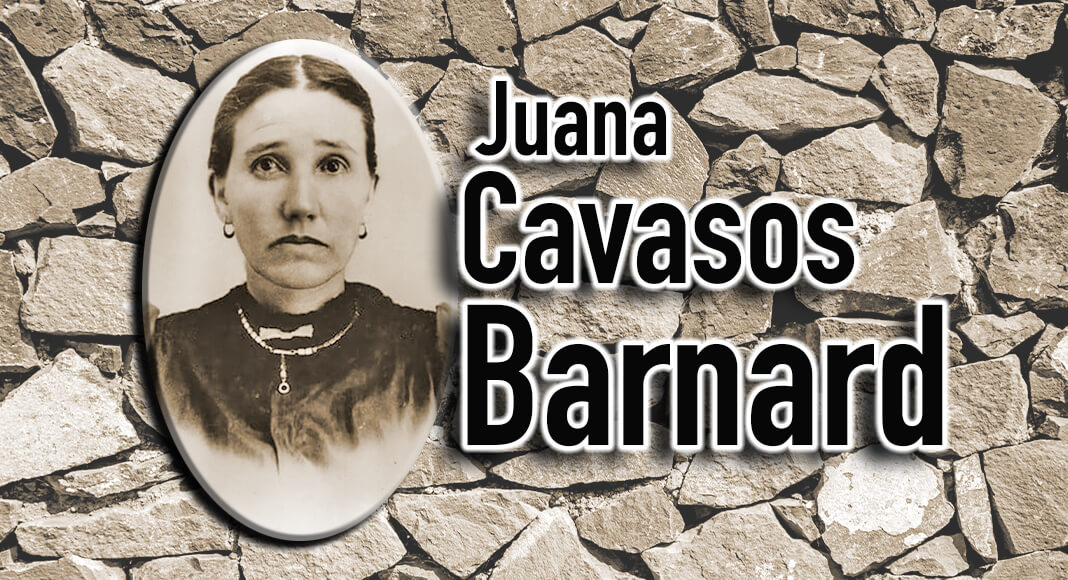
Texas Border Business
By Cynthia E. Orozco, Handbook of Texas Online
Published by the Texas State Historical Association
JUANA JOSEFINA CAVASOS BARNARD (1822–1906) – Juana Cavasos Barnard, Indian captive, slaveowner, and pioneer in the area of present Somervell County, was born in Mexico to María Josefina Cavasos and was reportedly of Spanish and Italian lineage and a descendent of the Canary Islanders. Her family lived in Matamoros, Tamaulipas. Her grandfather, Narciso Cavasos, had received the largest Spanish land grant in Texas. In 1848 she married Charles E. Barnard of Connecticut, considered the first permanent non-Indian settler in the area of present Somervell County. They had fourteen children, six of whom survived into adulthood. She had twenty-five grandchildren and thirteen great grandchildren.
On August 15, 1844, Comanche Indians raided South Texas near the Rio Grande and captured Juana, who was then eighteen. One account reports that she was held captive for seven months, while another reports three years, but Juana’s own testimony suggests she may have been captive less than a month. The Comanches visited the Tehuacana Creek Trading House operated by George Barnard in north central Texas. Barnard traded $300 in horses and merchandise for Juana. Shortly afterwards she married George’s brother Charles. Charles Barnard has been recognized as having cordial relations with various Indian tribes. Juana noted that she lived in the Somervell County area for many months without seeing a White woman.
The Barnards accumulated some wealth through landholdings, trade, and income from a gristmill. In 1849 Charles and George established a trading post to trade with Indians. Juana may have helped operate the trading post, since she stated that they kept their trading house for the Indians for fifteen or twenty years. Charles bought out George’s share in 1859. That year the United States government moved the Indians from the Fort Belknap reservation to Oklahoma, and thus the Barnards’ customers decreased.
Using slave labor Barnard had a mill built in 1859–60, the first building at the site of present Glen Rose. Around 1860 he was considered an extensive slave owner. Juana apparently had one or several slaves in her household, since she noted they had “plenty of Negro slaves.” In 1860 their real estate was valued at $50,000 and their personal estate at $60,400. In the early 1870s Charles sold the mill for $65,000. Charles and Juana’s wealth declined in the 1890s. In their last years they resided in a small log house. When Charles died in 1900, Juana sold 200 acres to her children, but the bill of sale was not to take effect until her death, probably because she would have been homeless otherwise.
Juana and Charles were considered social leaders. Juana acted as a midwife and had some skill with medicinal herbs. She was reportedly an excellent horsewoman, and at the ripe age of seventy-eight she still maintained a garden. She was one of the few Spanish-Mexican women known to be an Indian captive, and she gave oral testimony to her granddaughter Verdie Barnard Alison in 1900, entitled “My Life with the Indians.” In it she discussed the day of her capture and described the violent deaths she witnessed. She noted that she was captured for purposes of trade. Juana is the subject of Juana, A Spanish Girl in Central Texas by Pearl Andrus, a fictional account based on interviews with descendants and research. Juana Cavasos Barnard died of natural causes on February 1, 1906.













